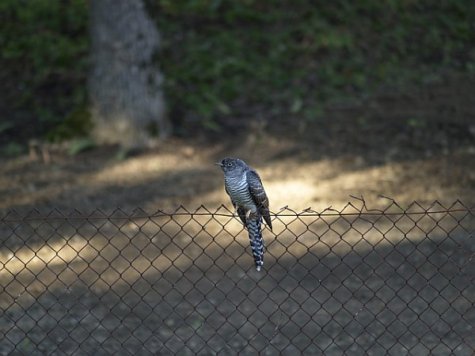Young cuckoos roam about
Photo: Olav Parkson
Translation: Liis
Juvenile bird on wire fence
Cuckoo Kägu Cuculus canorus
We see the secretive cuckoos rather rarely but an encounter is probably most likely during the autumn migration period. Cuckoos have long and pointed wings, a long tail and barred underparts, leaving a first impression of a bird of prey. The beak reveals that it is not a raptor. The plumage of male birds is bluish grey, female birds have more brown hues, particularly in the crop area. They weigh about a hundred grams.
Cuckoos parasitize the nests of our passerines – wagtails, meadow pipits, robins, dunnocks, grey flycatchers ... The cuckoo chick’s foster parents must be insect eaters. Research confirms that the female cuckoos - that lay more than ten eggs in the spring - look for nests of the same species as their own foster parents – it is certain then that they will manage to raise the cuckoo chick in their nest









